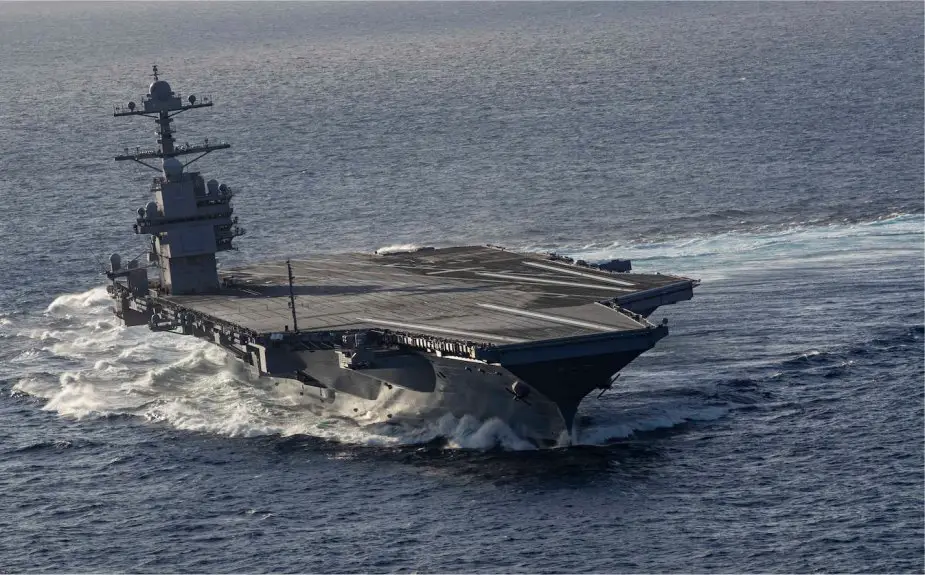According to information published by the U.S. Navy on March 2, 2022, USS Gerald R. Ford (CVN 78) successfully completed sea trials off the coast of Virginia this week, marking the successful conclusion of its inaugural Planned Incremental Availability (PIA).
Follow Navy Recognition on Google News at this link
 Gerald R. Ford-class aircraft carrier USS Gerald R. Ford (Picture source: US Navy)
Gerald R. Ford-class aircraft carrier USS Gerald R. Ford (Picture source: US Navy)
The Gerald R. Ford-class is a class of nuclear-powered aircraft carriers currently being constructed for the United States Navy.
The class, with a planned total of ten ships, will replace the Navy's current carriers on a one-for-one basis, starting with the lead ship, Gerald R. Ford replacing Enterprise (CVN-65), and then eventually taking the place of the existing Nimitz-class carriers.
The class has a length of 333 m, a width of 77 m, and a displacement of 100,000 tons and is equipped with AN/SPY-3 and AN/SPY-4 active electronically scanned array multi-function radar.
The armament of the USS Gerald R. Ford-class consists of two RIM-162 ESSM launchers, two RIM-116 RAM, three Phalanx CIWS, and four M2 .50 Cal. (12.7 mm) machine guns.
The RIM-162 Evolved SeaSparrow Missile (ESSM) is a medium-range, surface-to-air missile designed and manufactured by the American company Raytheon Missile Systems.
The missile can be launched from a quad-pack canister for the MK 41 VLS (Vertical Launching System) shipborne launching system or in a single pack for the MK 29 trainable launcher and MK 48 guided missile VLS. The missile has an operational range of 50 km and can fly at a speed of Mach 4.



